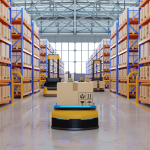As procurement evolves to support broader enterprise resilience, AI is driving change at the process level, quietly but effectively. Its value lies in reducing friction, improving consistency, and enabling more reliable decision-making. From intake and forecasting to supplier visibility and contract oversight, companies are applying AI and ML in targeted areas where precision matters most. The result is a function that’s becoming sharper, faster, and more structurally sound.
Tariffs Reshape Procurement Priorities
The return of steep tariffs under the Trump administration, 10% on most imports and 25% on foreign-made vehicles, has pushed procurement leaders into crisis-response mode. For many mid-sized firms lacking buffer inventory or flexible contracts, the impact has been swift – rising costs, operational bottlenecks, and unplanned pass-throughs to customers.
Larger enterprises are faring better, but not without effort. They’ve moved quickly to activate backup suppliers, redistribute shipments, and reassess nearshoring plans. These tactical pivots demand both speed and precision, two qualities that conventional procurement systems and workflows often struggle to deliver under pressure.
Artificial Intelligence is filling that gap. From modeling the cost impact of new duties at the SKU level to forecasting disruptions in supplier performance or shipping routes, ML systems are reducing the latency between data overload and decisive action. They enable procurement to respond not just faster, but smarter—supporting scenario planning, flagging exceptions, and automating thresholds in real time.
Real-Time Procurement Governance
Procurement’s operating model is undergoing a structural shift. Quarterly sourcing events and static supplier evaluations no longer hold up in an environment shaped by shifting tariffs, ESG mandates, compliance audits, and economic volatility. Leaders now operate in a state of ongoing recalibration—and machine learning is fast becoming the backbone of that live governance layer.
By ingesting streams of supplier data, market indices, contract terms, and historical performance, ML models detect anomalies and risks as they emerge. Price spikes, compliance lapses, and delivery delays are flagged automatically—not after the fact, but as they happen. Some organizations have even tied these systems directly to purchasing thresholds, blocking or rerouting POs when updated policy or risk criteria are triggered.
Manufacturers are using ML to screen suppliers for forced labor indicators before onboarding. Commodity-intensive businesses are deploying predictive pricing engines to revalidate purchase orders in line with market fluctuations. These capabilities don’t replace human judgment, but they do embed a new level of accountability, speed, and control into daily operations.
A New Foundation for Operational Discipline
The practical application of AI and ML in procurement is no longer confined to innovation pilots or cost-saving exercises. It is being woven into the day-to-day mechanics of sourcing, intake, risk monitoring, and contract governance. As this integration deepens, the focus for procurement leaders will be on ensuring that AI enhances process integrity, responsiveness, and scalability The most effective use of AI is not transformative in appearance, but structural in impact—quietly reinforcing procurement’s ability to deliver under growing complexity.







